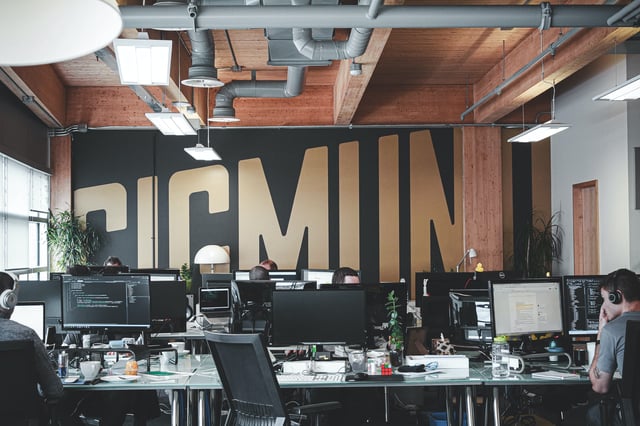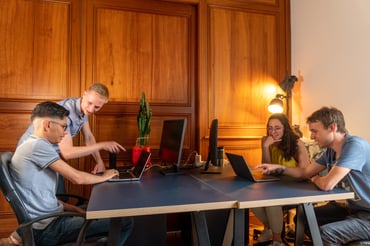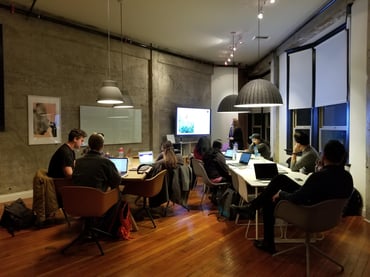Hindsight, foresight, flash foresight, sensing systems, future thinking, chocolate futurists, open future approach, peripheral vision, and clairvoyance the expressions used to describe probable and not-so-probable futures abound.
Fuzzy terminology aside, the ambition to sketch accurate portraits of the future sits high on corporate agendas. So high in fact, that it takes a seat next to “innovation”. Strategic hiccups are feared from Hollywood blockbusters to Pfizer drugs (unraveling taboos and foreseeing commercial success), and from Michelin’s PAX system tires (failing to predict how the ecosystem will react to radical innovation). Under these circumstances, studies and methods of studying the future become more relevant than ever. Let’s explore what corporate foresight is and how it helps innovating.
What is Corporate Foresight?
Corporate foresight is a managerial practice widely used in corporations nowadays, that involves systematical analysis of the external environment to understand emerging trends, opportunities, and threats that could have an impact on a company in the future. Its main goal is to provide a company with a long-term overview of potential disruptions and innovations.
By using various tools and methodologies, such as scenario planning, trend analysis, and technology forecasting, companies are able to shape their future rather than react to it, fostering innovation and sustainable growth.

The Power of Corporate Foresight
While experiments certainly help explore what works in the short - even mid-term - and what does not, devoting time, resources, and, of course, your undivided attention to foresight activities is a critical exercise for long-term survival.
Turn to business literature and the articles abound. Strategy& (Formerly Booz & Co.)’s inaugural edition on strategy and foresight is a great example. Published in July 2014 in light of companies’ fixation with growth, it offers a collection of excellent reads on change management, reinventing the enterprise in the digital era, and even a journey through the CEO’s office from 1914 to 2040.
Complementing the literature, physical events are also hosted to discuss the state-of-the-art in corporate foresight. For instance, the XXV ISPIM Conference in Dublin arranged a special workshop earlier this year bringing together bright minds from industry, academia, science, and government to share their research and opinions on the matter. It was at this event that I was introduced to one of the most cited works in corporate foresight - René Rohrbeck and Hans Georg Gemünden’s paper on foresight’s three roles in enhancing the innovation capacity of a firm. Below, are a few excerpts from this invaluable study that analyzed 19 multinational organizations (e.g. Telefonica, Volkswagen, Osram, Deutsche Bank, Hugo Boss) via 107 interviews and a lot of NVivo 8 work:
- In the early 90s, the limitations of forecasting became apparent and research moved away from trying to predict the future towards identifying possible, probable, plausible, and preferable futures; today in fact, practitioners are more inclined to invest in uncovering undetected currents than in assessing the impact and evolution of existing technologies.
- Foresight enhances the dynamic capabilities of a firm helping it stay competitive; additionally, foresight is expected to support the renewal of the strategic resource portfolio – at what pace you wonder? At the pace of corporate change, of course.
- Out of all stakeholders, it is the users of the corporate foresight exercise that matter the most.
- Why do firms find it difficult to renew their products and organizations? High rate of change, ignorance – i.e. short time frames for action, ineffective corporate sensors, information overflow, inability to assess impact; and inertia caused by complex internal and external structures.
- The three roles corporate foresight plays in enhancing the innovation capacity of a firm are the strategist role, the initiator role, and the opponent role.
How Do Corporate Sensors Evolve and What Infrastructure Is Needed For Forecasting?
Drawing a parallel to the natural world, Sidney Graham Winter, a US economist and Professor Emeritus of Management at the Wharton School, summarizes his thoughts as follows:
- The sensors – or mechanisms used to detect threats and opportunities - are the products of evolution and usually reflect past events; such sensors are costly and a big part of their cost is fixed because (much like with bees or moths) they need to remain active whether something is happening or not. This means that in order to thrive, organizations need to create infrastructure for gathering information about the environment through its staff, and even members of its ecosystem. This infrastructure can be as simple as an idea management tool and as complex as a unit dedicated to foresight.
- As organizations become more successful, they tend to reinforce the systems that helped them grow. Sadly, this also caps investment in new sensors, limiting peripheral vision and leaving managers exposed. Through the feedback of experience, though, firms become better at coping with the environment – no matter what surprises it may hold.
Generally speaking though, sensors of events are underutilized, expensive, ineffective, or inconsequential and tend to atrophy. More often than not past experiences are a bad predictor of the future and therefore trend and environmental analysis, creativity methods, scenario planning, simulations, and even expert surveys such as Delphi are top-ranked, leaving literature or patent surveys somewhat behind.

Final Thoughts
Whether a promise or a threat, studying the future remains one of the most complex (and rewarding) exercises in the corporate world. Hopefully, the pointers in the article will inspire you to be more proactive about your future too.










